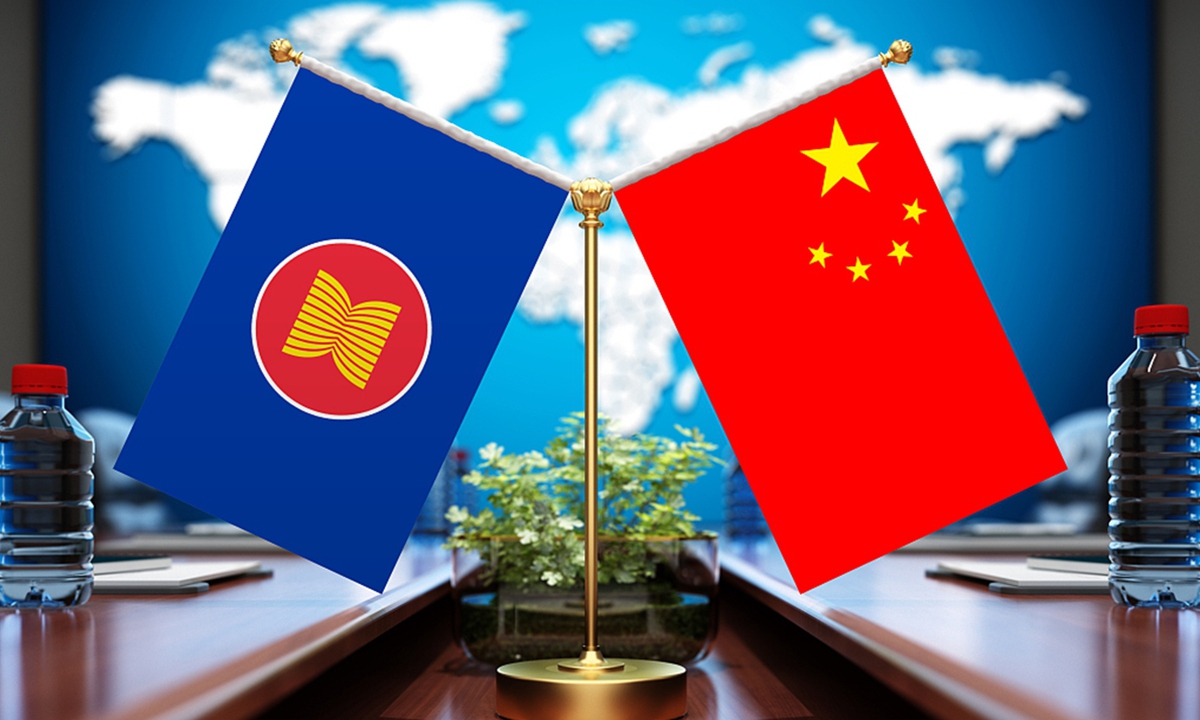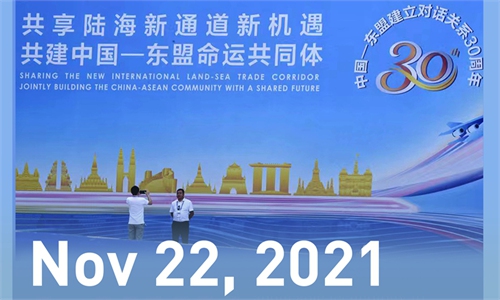Smooth sailing for China and ASEAN despite interference of extraterritorial actors

Photo: CFP
Upon the ASEAN-China Special Summit to Commemorate the 30th Anniversary of ASEAN-China Dialogue Relations, it is worth recalling the achievements of bilateral cooperation in the maritime field.First, the multi-layered maritime cooperation mechanism is becoming complete.
The signing of the Declaration on the Conduct of Parties in the South China Sea in 2002 and the establishment of the China-ASEAN Maritime Cooperation Fund are two landmark bilateral maritime cooperation feats. They advanced the build-up of the multi-layered and multifaceted maritime cooperation mechanism. Notably, the Senior Officials' Meeting and the Joint Working Group Meeting were established to implement the declaration.
Second, maritime economic cooperation, represented by fisheries and tourism, has developed rapidly.
Maritime economic cooperation between China and ASEAN has expanded from traditional industries such as fisheries and shipments to new ones, including tourism, technology and higher education. As China and ASEAN countries adjust their own maritime strategies, they actively pushed forward setting up the free trade area and signed the Regional Comprehensive Economic Partnership. Initiatives proposed by China, such as 21st century maritime Silk Road and the Pan-Beibu Gulf Economic Cooperation, provided continuous mechanic driving force for bilateral maritime economic cooperation.
Third, abundant results have been achieved in terms of non-traditional security cooperation.
China and ASEAN have built up a non-traditional maritime cooperation network in areas such as environmental protection, disaster relief, sea lane security, transnational crime crackdown and maritime law enforcement. For instance, under the framework of the Regional Cooperation Agreement on Combating Piracy and Armed Robbery against Ships in Asia, China and ASEAN have effectively pushed forward cooperation to combat piracy and armed robbery, providing lane security in the South China Sea.
Fourth, breakthroughs have been made in maritime security and defense cooperation.
As a sensitive area of bilateral maritime cooperation, security and defense cooperation has made breakthroughs in recent years. In October 2017, China and ASEAN reached an agreement on conducting joint maritime exercises. In August and October 2018, China and ASEAN held tabletop exercise in Singapore and joint maritime exercise in the northern waters of the South China Sea respectively. These exercises carry particular significance to boost security cooperation and bilateral relations between China and ASEAN.
Fifth, the control over maritime disputes has been effective.
A biggest obstacle to China-ASEAN maritime cooperation is the dispute over territorial sovereignty and maritime interests. To handle the disputes, China and ASEAN countries have conducted fruitful communication and consultations. This includes the signing of the DOC in 2002, the agreement of the guideline to implement the DOC in 2011, and starting the consultations on the Code of Conduct in the South China Sea in 2013. These efforts have played a positive role in managing differences, maintaining maritime peace and stability, and promoting maritime cooperation.
However, the interaction between China and ASEAN countries over maritime issues also faces many challenges.
First, some ASEAN countries are still wary of China's policies and claims in the South China Sea and the theory of "China's maritime expansionism" is still attractive to some forces in the Philippines, Vietnam, Malaysia and Indonesia.
Second, the US and its allies see the Southeast Asia as an important place to compete for geopolitical power. They constantly interfere in exchanges and cooperation between China and ASEAN countries, using the South China Sea as a key leverage. The involvement of extraterritorial countries has been another negative factor for China and regional countries to enhance maritime cooperation.
Third, the over exploitation of marine resources has restricted regional economic collaboration. Due to the competition for fisheries and marine oil and gas resources, some neighboring countries have adopted predatory and exclusive development policies, which hindered the transformation of marine industrial chains.
Therefore, China and ASEAN countries need to properly handle the maritime disputes and effectively address the interference of extraterritorial actors. Both sides should draw lessons from history to build up high-quality regional maritime relations, and be guided by the construction of a maritime community with a shared future.
First, China and ASEAN should put effort on building a blue economy partnership and promote high-quality transformation of regional maritime industrial economy, through innovation in technology and regional cooperative mechanism.
Second, both sides should develop new concepts of maritime security, maintaining the peace and stability in the South China Sea. In the past decades, tensions in this region have continued to escalate due to the US-led major power competition. China and ASEAN could build a new pattern of promoting common security through a long-term dialogue mechanism.
Third, China and ASEAN countries are responsible for regional maritime governance cooperation, and should formulate a response plan for the challenges including plastic waste and resource degradation.
To conclude, as neighbors in this region, the interests of China and ASEAN countries could only be maximized by cooperation and reaching common prosperity in the South China Sea.
The author is director of Division of International Exchanges, National Institute for South China Sea Studies. opinion@globaltimes.com.cn

